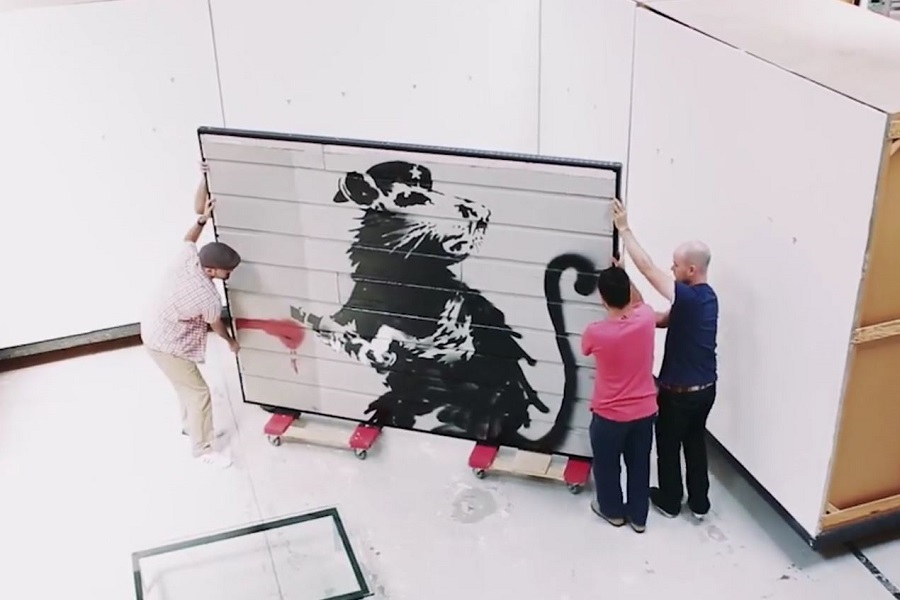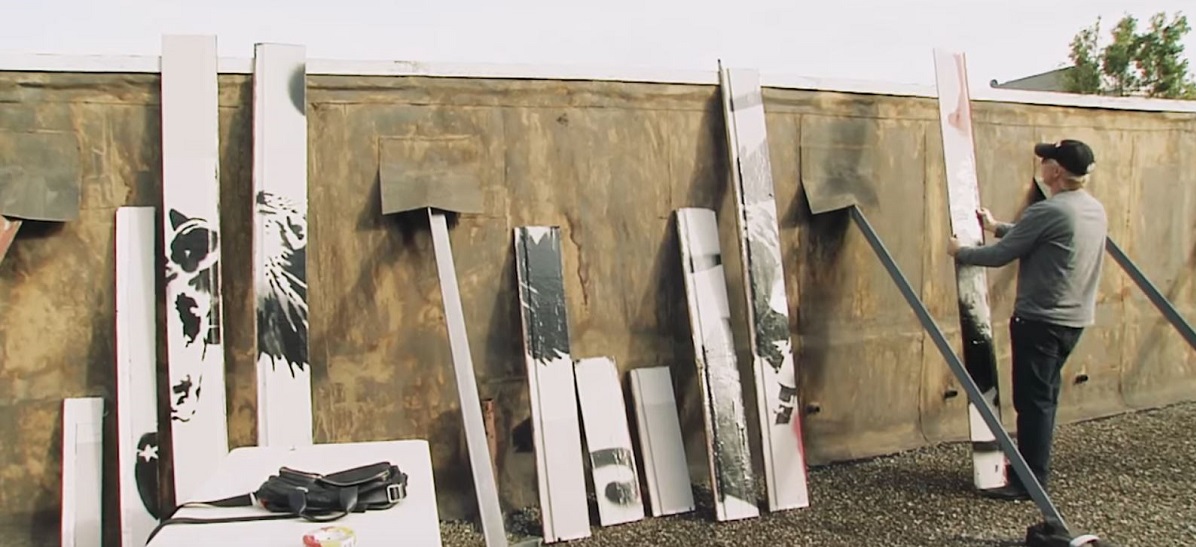The cross section between art and commerce has always been a contemptuous relationship. Long the question has raged of “how can one truly create art, if they are doing so solely out of intent to profit?” Furthering this divide even more, is the world of street art, where your pay is supplemented by the pure act of expression and the legacy that builds in you and your art’s, wake. Saving Banksy is a look into how art moves us, how long it should last, and the ethical dilemma that comes from when your work is left in a public arena.
Arguably the biggest name in the street art world, Banksy has found himself intrinsically tied to everything and anything that movement goes up against. The latest battle concerns people who try to “liberate” street art instillations. Often times in doing so, the parties who “take” said artwork have the intention of putting it on the auction block, regardless of the artist’s wishes.
Those who are most interested in the identity of Banksy though, are better served looking elsewhere, as Saving Banksy
eschews the topic completely. It’s a bold move, focusing on the work of the artist instead and using them as a launching pad for a larger, more pertinent discussion. Smarter still is gathering some of of the most respected and popular street artists currently around. Risk, Blek Le Rat, Doze Green, Hera and a half full of others are all present here. Allowing their views and opinions to be heard, often on both sides of the argument, is both unexpected and deepens the stakes.
Standing out above them, both through screen time and insight, is that of Ben Eine. A prolific street artist in his own right, Eine is also supposedly a close confidant of Banksy’s, along with one of the few who know the true identity. Through him we are able to get a better sense of the artist, as well as the events surrounding the removal and safeguarding of Banksy’s Haight Street Rat.
In 2010, while promoting his own documentary film, Exit Through The Gift Shop, Banksy had an extended stop over in San Fransisco. Over the course of a few days, he put up 6 different pieces. More often than not they were tagged over or washed hours later. Buildings or storefronts that did what they could to preserve the artwork, opened themselves up to possible fines by the city. San Fransico had a law stating that it was the owners of the building’s responsibility to remove any graffiti that should appear.

Enter Brian Greif. A former television station manager in San Fransisco, who decided to take it upon himself and save one of the few Banksy works in the city. As Greif navigated the arduous path trying to secure and restore the Banksy, he tried to find a museum to donate to. Unfortunately, none of them took on the Haight Street Rat, as they stated they need both authentication and permission from the artist to be able to display it. Lurking in the background and waiting to pounce is a seemingly unscrupulous art dealer, Stephan Keszler, who sees himself as Banksy’s number one fan. In reality though, by exploiting an artist’s work and a hungry market, he threatens to harm a world he doesn’t even understand.
Keszler sets to exploit an artist’s work and a hungry market, and threatens to harm a world he doesn’t even understand. Greif says he wants to put the Banksy on display for all to see, but it wasn’t his work to take down in the first place, let alone choose how it should be viewed. The artists themselves are split down the middle, with the unifying common thread being “permission”. Having the right to say which of their works can or should be sold seems like an odd stance, but it seems like having the right to say “no” is the overarching empowering idea.
That in and of itself is rather contentious, as one artist comments, with the art being often truly “of the moment”. That taking the art out of it’s original habitat, changes its content, often rending it moot. So should street art be a viable marketplace, or should it simply be enjoyed, in the short time it’s still fresh? Who decides the inherent value of worth for someone else’s artwork? What permission should, or is needs to be given if someone should remove any street art, strictly for the case of making a profit?
If there is a downside to the proceedings, it is the occasional narration. As most of the context gets conveyed through text on-screen, or Eine himself. Having a disembodied voice suddenly convey set up, feels jarring. Given how smoothly the rest of events flow, along with the captivating material, a minor misstep is forgivable, specially in a first feature. Most of the documentary features some of the most honest film-making to come out in a while, as it knows there are no clear cut answers, but feels that asking the questions, is just important enough.

Just like the best of street art, Saving Banksy is short lived, but leaves a lasting impression long after it’s gone. Art, in all variety of forms, is what helps define periods of history. While the majority of works showcased here may be physically gone, the digital age has allowed generations to come the opportunity to enjoy, appreciate and discuss them. That in and of itself, should be a win worth celebrating.
(Update: Saving Banksy is now streaming on Netflix. This space original denoted a limited theatrical run. For more information about the film visit: http://savingbansky.com )



